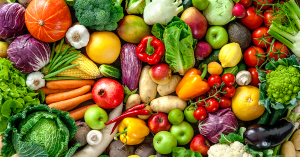
Eat colorful please!
Is eating colorful linked to the prevention of chronic diseases such as several cancers, heart disease or diabetes?

Cancer - Prostate

Cancer - Prostate

During this month dedicated to prostate cancer awareness, we take the opportunity to encourage you to make small changes to improve your overall well-being.
Since maintaining a healthy and vibrant lifestyle is fundamental to your quality of life (regardless of your prostate cancer diagnosis), we are proposing below five behaviors that can benefit your health. We invite you to think about which one you think is the most feasible to adopt into your daily routine over the next 21 days, at a time that suits you perfectly. Each of these behaviors is accompanied by additional information and practical advice to guide you in your approach and make your choice easier.
Your choice of food has a tremendous influence on your journey, especially before, during and after prostate cancer treatment. Each bite infuses you with vital energy, cultivates your well-being, propels your healing process, wards off fatigue, and forges an armor of resilience against side effects and possible recurrences. More so, your diet becomes a powerful shield against the threats of chronic disease, helping you chart a course for lasting health. Every meal is an opportunity to strengthen your body in its quest for vitality and happiness.

Modifiable behavior : Excessive consumption of processed foods
To best reduce your intake of highly processed foods, choose fresh, unprocessed foods instead that are free of additives, added sugars, and saturated fats. Of course, it may seem simple to say, but let’s see some basics below to guide you.
Junk food can have a negative impact on health by increasing the risk of problems such as obesity, heart disease, type 2 diabetes and other metabolic disorders, as well as increasing the risk of developing certain cancers . When it comes to prostate cancer, some studies have highlighted the importance of a healthy diet in preventing this disease, while others have not. Although we are awaiting the results of ongoing research, prevention is the best option!
Junk food is often lacking in essential nutrients, which can lead to nutritional deficiencies.
It can cause energy spikes followed by crashes, leading to a feeling of fatigue and lack of energy.
It can affect mood by causing emotional fluctuations, such as irritability from energy drinks, or by contributing to inflammation in the body which can negatively impact mood.
Highly processed foods with chemical additives and artificial ingredients can disrupt neurotransmitters in the brain, thereby influencing mood.
It is important to diversify your diet by including a variety of foods from each group to ensure a balanced and nutritious diet.
Fruits and vegetables (all): These are rich in vitamins, minerals, fiber and antioxidants essential for good health.
Whole grain products (rice, pasta, bread): These provide complex carbohydrates, fiber and B vitamins, while avoiding refined versions.
Lean protein: This includes lean meats, poultry, fish, eggs, legumes (beans, lentils, chickpeas), and low-fat dairy products.
Low-fat dairy products: These provide calcium and other essential nutrients while reducing saturated fat intake.
Healthy fats: This includes unsaturated fat sources such as avocados, nuts, seeds, olive oil and fatty fish.
Limit sugar and salt: Reducing the intake of added sugar and salt is beneficial for overall health.
Water: Proper hydration is essential, so water should be the primary drink of choice.
Other benefits of preparing homemade meals made from fresh, unprocessed foods:
You can easily adapt the recipes to suit your specific food preferences and dietary needs.
They allow you to save money versus eating out, ordering from a fast food restaurant or buying prepared meals.
They give you the feeling of being in control of your diet and taking care of your health.
Not sure where to start?
Take an inventory of what’s in your fridge, freezer, cupboards and pantry. Do you have healthy foods on hand? They can be fresh, frozen, canned or canned/packaged.
Do some Google searches for healthy recipes with your healthy foods.
For example, we recommend the Nourish (Savourer Santé) website for healthy and adapted recipe ideas.
Take note of your missing ingredients. What are you missing as an ingredient for this meal? Make a list and go get them.
Here are some other examples of colorful and tasty foods to add an explosion of flavors to your plate or throughout the day:
Salads: Try colorful combinations of lettuce, arugula, cherry tomatoes, cucumbers, radishes, avocados and whole grains like quinoa.
Smoothies: Mix colorful fruits and vegetables with yogurt, milk or plant-based milk to create nutritious and vibrant smoothies.
Main dishes: Prepare colorful dishes by adding a variety of vegetables to your stir-fries, curries, omelets or pasta dishes.
Snacks: Opt for healthy, colorful snacks like veggie sticks with yogurt-based dip, mixed dried fruits and nuts, grapes with low-fat cheddar or cottage cheese.

Is eating colorful linked to the prevention of chronic diseases such as several cancers, heart disease or diabetes?
Click on the links below to access more information to help you achieve your commitment:

Modifiable behavior : Excess sugar consumption.
To further reduce your sugar intake, focus on naturally sweet foods such as vegetables, fruits and milk, and limit sugary drinks, pastries, desserts, sweets and packaged products. Of course, it may seem simple to say, but let’s see some basics below to guide you.
It is crucial to understand that excess sugar in our diets is closely linked to a range of major health problems such as type 2 diabetes, obesity, heart disease, stroke, stroke, hypercholesterolemia, certain forms of cancer without neglecting dental tooth decay.
When we take steps to reduce our sugar intake, we can dramatically improve our well-being and have the opportunity to make a significant contribution to our overall health, by reducing the risks associated with these serious health conditions.
Every conscious choice to reduce sugar in our diet is a decision that helps strengthen our future and promotes a healthy daily life.
The average Canadian consumes about 26 teaspoons of sugar per day, with men consuming significantly more than women. (Statistics Canada)
Many popular drinks contain more than half of the daily recommended sugar intake. For example:
Sugar is present in many foods, either because it is found naturally or because it is added to it. It is found in several forms: white sugar, brown sugar, molasses, honey, maple syrup, evaporated cane juice, fruit puree, concentrated fruit juice and syrup-based corn sweeteners.
It can be present on the list of ingredients on food labels, under the following names: glucose, fructose, dextrose, maltose, sucrose (or sucrose). If one or more types of sugar are listed as the first or second ingredient on a food label, then the food is likely high in sugar.
Products containing sugar provide no nutritional benefit in addition to promoting cavities and other dental problems.
Sugar is often added to processed foods to enhance flavor, improve appearance and texture, and increase shelf life.
Foods rich in carbohydrates that have good nutritional value are mainly:
Other benefits of reducing your daily sugar intake:
Not sure where to start?

My doctor informed me that I am a little bit diabetic and that I will have to make important changes to my lifestyle.

With all the information on the internet, especially with regards to diet, you have made the decision to eliminate all unhealthy foods responsible for the development of cancer or its
Click on the links below to access more information to help you achieve your commitment:

Modifiable behavior : Excessive salt consumption
To better reduce your sodium intake, prioritize a diet rich in vegetables, fresh fruits, and whole grains, while limiting processed and packaged foods, processed meats, soups, and sauces. Of course, this might sound simple to say, but let’s explore some basic concepts below to guide you.
According to the Heart and Stroke Foundation, about one in three people is sensitive to the sodium found in salt. This means that the excess salt consumed by these individuals can increase the amount of blood circulating in their arteries, raise their blood pressure, as well as the risk of heart disease and stroke.
For example, a 60g bag of chips contains 480mg of sodium. Add to that a ham sandwich made with 2 slices of bread (280mg), 2 slices of ham (430mg), 1 slice of Kraft cheese (430mg), mayo and mustard (180mg). Total: 1800 mg out of the recommended 2300 mg per day. If you also add salted tomatoes and cucumbers to this meal…
The daily nutritional value (DV) of sodium/salt as a percentage (%) per serving is indicated on each packaging, along with the quantity of sodium in mg.
The indicated DV percentages inform you whether the food contains a low or high amount of a given nutrient, in this case, sodium. Packaged food products should not exceed 15% of the recommended daily value, while a main dish should not exceed 30% of the recommended daily value.
For example, the DV of sodium contained in a can of flaked light tuna is 7% (1/4 cup). It is 15% for a can of small red beans (1 cup). However, it’s 20% for a 60g bag of potato chips.
Hence, the importance of reading labels!
Other benefits of reducing your daily salt intake:
Not sure where to start?
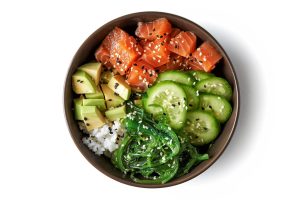
The results came in and for the fourth year in a row, the Mediterranean diet was chosen as the best diet to follow in 2021, according to US News and

Cardiovascular or coronary heart disease is the second leading cause of death in men after cancer and a leading cause of hospitalization. Beyond healthy lifestyle habits, they are also influenced
Click on the links below to access more information that will help you fulfill your commitment:
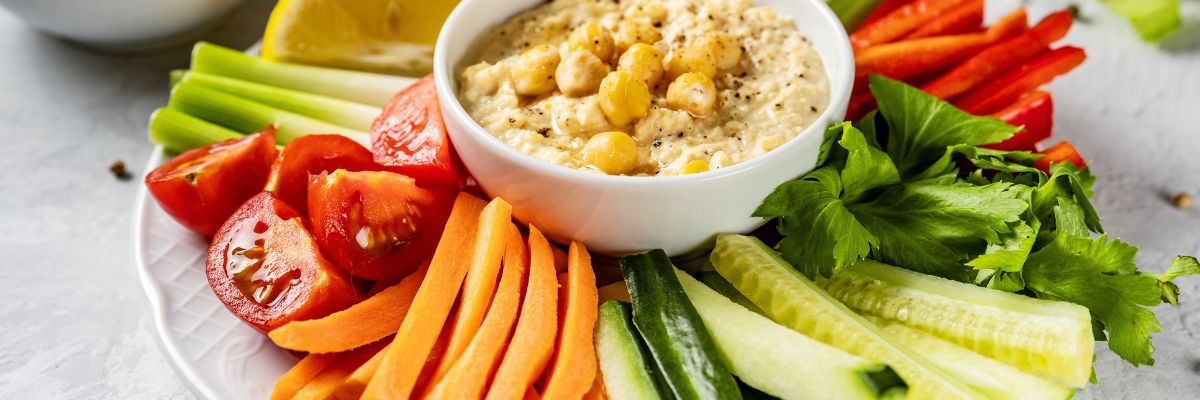
Modifiable behavior : Snacking and unhealthy snacks
To better manage snacking and avoid unhealthy snacks, it is advised to avoid skipping meals, as this can lead to cravings and less healthy food choices. Instead, prioritize balanced meals and nutritious snacks between meals if needed. Of course, this might sound simple to say, but let’s explore some basic concepts below to guide you.
In addition to contributing to overweight and obesity, snacking on high-fat, high-salt, or high-sugar foods can also lead to various diseases, such as hypertension, type 2 diabetes, and/or high cholesterol levels.
Snacking and snacking are both instances of consuming food outside the main meals of the day.
In daily life, snacks are not necessary if you don’t feel the need for them. However, they can help balance your energy intake throughout the day and prevent food cravings later in the day. Snacks are therefore your allies in helping you achieve your goal of eating better!
The number of snacks per day needed can vary depending on different factors such as your age, physical activity, level of hunger, and individual needs. In general, most adults can feel satisfied by consuming one to two snacks per day, in addition to the three main meals.
It consists of two complementary foods (for example, a fruit or a vegetable and a protein or a dairy product), and it should be minimally processed. Carbohydrates provide you with quick energy, while protein-rich foods keep you satisfied until the next meal.
Here are a few ideas:
Here are some snack suggestions that can be incorporated into your diet:
Other benefits of incorporating healthy snacks into your diet:
Not sure where to start?

At this time of year, eating a healthy diet can quickly be ruled out although it does help reduce your risk of cardiovascular disease and even prostate cancer. Here is
Click on the links below to access more information that will help you fulfill your commitment:
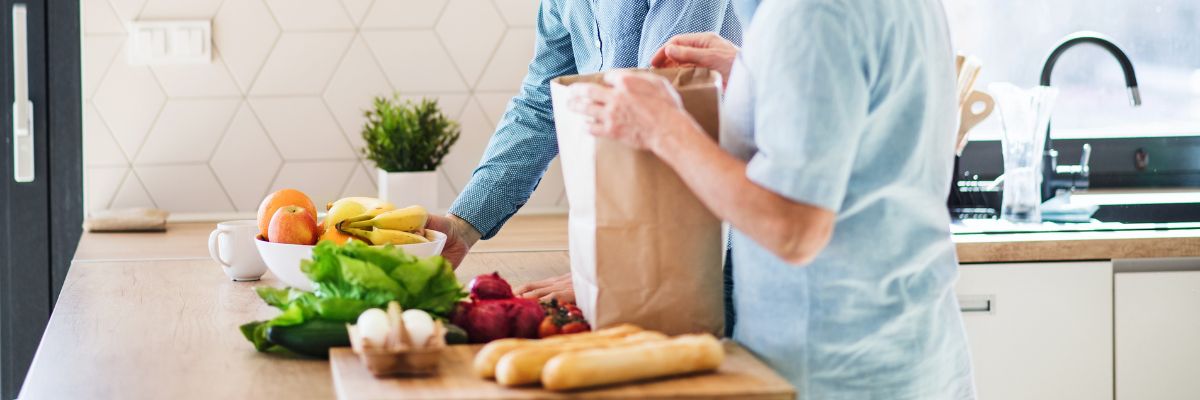
Modifiable behavior : Lack of meal planning and preparation
To better manage meal planning and preparation, it is recommended to set aside time each week to plan your meals in advance and create grocery lists while consulting flyers to make informed choices. This will help you avoid impulsive decisions and prioritize healthy options. Of course, this may seem easy to say, but let’s explore some basic concepts below to guide you.
Lack of meal planning and preparation can lead to stress and anxiety, food wastage, and short-term impulsive and unnecessary expenses. Moreover, it can contribute to unbalanced eating habits, potentially increasing the risk of long-term health issues such as obesity, diabetes, or cardiovascular diseases.
For example: A meal consisting of 2 chicken thighs, fries, and coleslaw for one person costs $23.28, whereas a whole fresh chicken costs $12, a bag of frozen fries costs $3.79, and a bag of shredded cabbage for coleslaw costs $1.99, totaling $17.78. You will need to cook the chicken and fries and prepare the coleslaw. However, it’s important to keep in mind that the second option, costing $17.70, can generate multiple meals, depending on whether you’re alone or with others, resulting in significant savings.
What does a balanced menu look like?
Here’s an example of a weekly menu. You can adjust the foods according to your preferences. Prioritize whole grain bread and pasta, long grain or brown rice, whole wheat flour, low-fat dairy products, lean meats, unsalted nuts or seeds, and fresh or frozen fruits and vegetables.
Monday
Tuesday
Wednesday
Thursday
Friday
Saturday
Sunday
Other Benefits of Planning and Preparing Your Meals:
Reduced Food Waste: By planning meals, you can buy only what you need, reducing food waste.
Time Savings: Meal planning saves time each day because you’ll know exactly what to cook and which ingredients are required. It also prevents last-minute stressful situations of figuring out what to eat or resorting to unhealthy options.
Cost Savings: By preparing your meals at home, you can buy ingredients in bulk, take advantage of promotions, and avoid unnecessary expenses at restaurants or with prepared meals.
Improved Digestion: Opting for fresh ingredients and avoiding processed foods can contribute to better digestive function, promoting improved digestion.
Don’t know where to start?
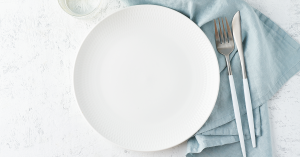
First, a quick Google search with the keywords Miracle Foods For A Healthy Prostate generated 5,800,000 results in 51 seconds! Interesting topic you say? You see, and we cannot say it enough,
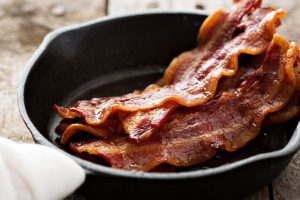
Blood cholesterol is a natural fat. Your body needs it to work properly. Blood cholesterol helps to make hormones, such as testosterone, cell membranes (which cover the cells), and vitamin
Click on the links below to access more information that will help you fulfill your commitment:
Written by PROCURE, 2023 © All rights reserved

Prostate cancer
do not experience it alone.
Our healthcare professionals are here to answer all your questions and those of your loved ones. Contact us.
Contact Us
© 2023 PROCURE – All rights reserved
Registration number: 86394 4955 RR0001
Terms of use | Privacy policy